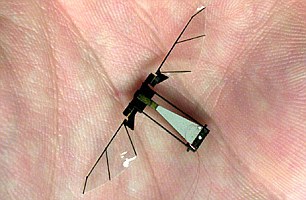4 Technology Trends that are Transforming Manufacturing
The manufacturing industry is on track for accelerated growth in 2017, the Institute for Supply Management projected in its December 2016 Semiannual Economic Forecast. Manufacturing revenue will increase 4.6 percent in 2017, compared to .9 percent in 2016. 16 manufacturing industries expect to see growth, including transportation, petroleum and coal products, computer and electronic products and chemical products. As the manufacturing industry grows, it is also being transformed by emerging technologies. Here are three innovations shaping the future of manufacturing in 2017.
3-D Printing
3-D printing is making its impact felt throughout the manufacturing industry. Two out of three U.S. manufacturers have already adopted 3-D printing, a PricewaterhouseCoopers survey found, for applications ranging from rapid prototyping to producing end-products. One of the big draws of 3-D printing is its cost-efficiency. Where traditional subtractive processes result in 60 to 70 percent of raw materials being discarded, 3-D printing’s additive manufacturing (AM) method virtually eliminates this waste, says Zilliant pricing manager Barrett Thompson.

Researchers have developed a 3D printer that prints human embryonic stem cells while other advnaces are still lagging behind (Dr Will Shu / Biofabrication)
As manufacturers shift to 3-D printing, the materials manufacturers use are changing to adapt to AM processes. 3M has patented a process that would facilitate 3-D printing of fluoropolymers, one of the integral components in manufacturing. Valued for its high temperature and chemical resistance, fluoropolymers such as fluorocarbon are virtually ideal for components such as o-rings.
Meanwhile, titanium is emerging as the metal of choice for metal additive manufacturing processes due to its high strength-to-weight ratio and biological inertness. Revenues from titanium-based AM powder are projected to reach $518 million by 2022 and $1.077 billion by 2026, outstripping all other alloys used in metal 3-D printing, prompting GE to acquire a controlling stake in leading industry supplier Arcam.
Robotics
Robotics is revolutionizing every phase of manufacturing, from production to product shipping. 59 percent of manufacturers are already using robotics, according to PricewaterhouseCoopers. By 2019, 1.4 million new industrial robots will be added to factories around the globe, with 40 percent of these being sold in China.
In some cases, robots are replacing human workers, but increasingly, robots are being designed to work in cooperation with humans, operating as “cobots.” Cobotics is emerging as an ideal combination of human innovation and dexterity and robotic efficiency and reliability. Cobotics is already seeing application in industries such as aerospace and automotive manufacturing, and is expected to spread to other sectors as robotics continues to grow in sophistication and usage.
The Internet of Things
The Internet of Things is everywhere, not least of all in manufacturing plants. Just as the IoT is transforming homes into connected homes, the application of IoT to manufacturing is turning factories into connected factories. In-factory sensors link machines, computers and humans together to maximize the efficiency of automated information monitoring, collection, processing and analysis. This type of interconnection can help increase efficiency by, for instance, identifying what temperature, pressure and humidity conditions generate optimal performance.
The potential of the Internet of Things for manufacturers is exemplified by a connected production plant where Stanley Black & Decker partnered with Cisco. By using mobile devices and Wi-Fi Radio-Frequency Identification tags, the plant was able to improve router production line equipment effectiveness by 24 percent and lower labeling errors by 16 percent, resulting in throughput increase of 10 percent.
Mass Customization
Cloud computing’s on-demand consumer model has encouraged consumers to expect customized product selection options, spurring a trend toward mass customization that is impacting manufacturing. Mass customization initially made an impact on manufacturing sectors such as the shoe industry, in which Nike has been offering customized shoes for the past few years. Mass customization has now become so widespread that Boeing, Harley-Davidson, John Deere, Schneider Electric and TCS recently came together to develop best practices for customized manufacturing.
In the auto manufacturing industry, mass customization is being combined with the Internet of Things to increase customer retention. Traditionally, if a customer begins shopping for a new car three to seven years after an initial sale, the car dealer has had little to no contact with the customer in the meantime, making the new sale a virtual new customer acquisition. With connected cars, manufacturers can collect data on customer habits and preferences throughout the period between sales, enabling them to offer customized cars geared toward individual consumer preferences.
Author: Carol Trehearn
















[* Shield plugin marked this comment as “trash”. Reason: Failed GASP Bot Filter Test (checkbox) *]
[…] […]
[* Shield plugin marked this comment as “trash”. Reason: Failed GASP Bot Filter Test (checkbox) *]
[…] […]
[…] of consumers shopping across all channels is growing with remarkable speed. As explained by the Global Dispatch, manufacturing revenue is expected to climb 4.6 percent through 2017, but this statistic could […]
[…] to the Global Dispatch, traditional inventory management operations will change in 2017. Inventory management will become […]